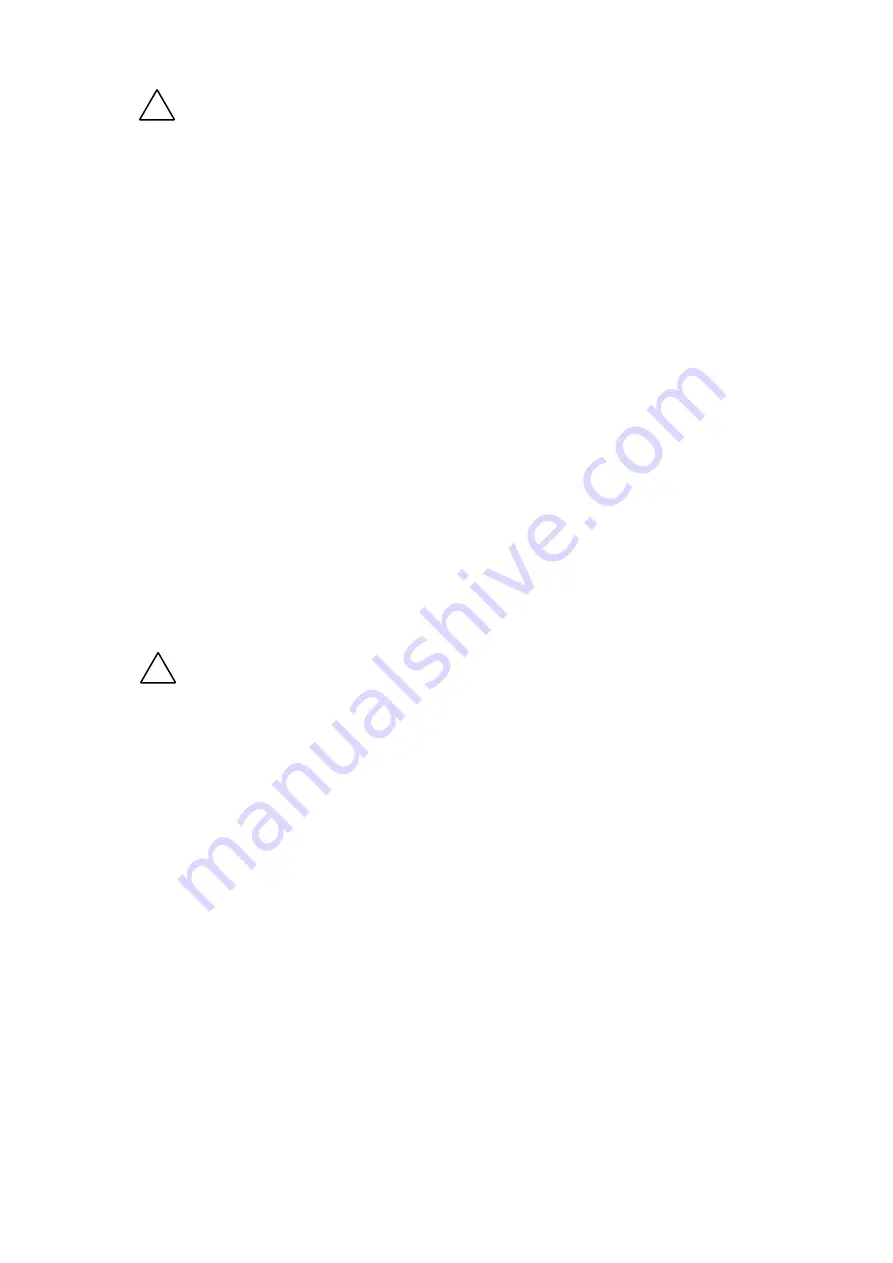
- 5 -
Caution
1) Install an air filter.
Install an air filter upstream near the valve. Select and air filter with a filtration size of
5μm or smaller.
2) Take measure to ensure air quality, such as by installing an after
cooler, air dryer or water separator.
Compressed air that contains a large amount of drainage can cause malfunction of
pneumatic equipment such as valves. Therefore, take appropriate measures to ensure
air quality, such as providing an after cooler, air dryer, or water separator.
3) Use the product within the specified fluid and ambient temperature
range.
When operating at temperatures below 5
o
For compressed air quality, refer to Best Pneumatics No.5.
C, water in the circuit may freeze and cause
breakage of seals or malfunction. Corrective measures should be taken to prevent
freezing.
4) Lubrication of non-lubricating cylinder
Install a lubricator in the circuit, and use Class 1 turbine oil (with no additive) ISO VG32.
Stopping lubrication later may lead to malfunction because the new lubricant will
displace the original lubricant. Therefore, lubrication must be continued once it has been
started.
2-2. Design
Warning
1) There is a possibility of dangerous sudden action by cylinders if
sliding parts of machinery are twisted due to external forces, etc.
In such cases, human injury may occur; e.g., by catching hands or feet in the machinery,
or damage to the machinery itself may occur. Therefore, the machine should be
designed to operate smoothly and avoid such dangers.
2) If there is a chance that the product will pose a hazard to humans,
install a protective cover.
If the moving portion of the product will pose a hazard to humans or will damage
machinery or equipment, provide a construction that prevents direct contact with those
areas.
3) Be certain that the secured portions will not loosen.
When the product operates with high frequency or is installed where there is a lot of
vibration, ensure that all parts remain secure.
4) Design the system so that it will not apply any external force over
the maximum force to the product.
The product can break, causing a risk of injury or damage to equipment.
!
!





















